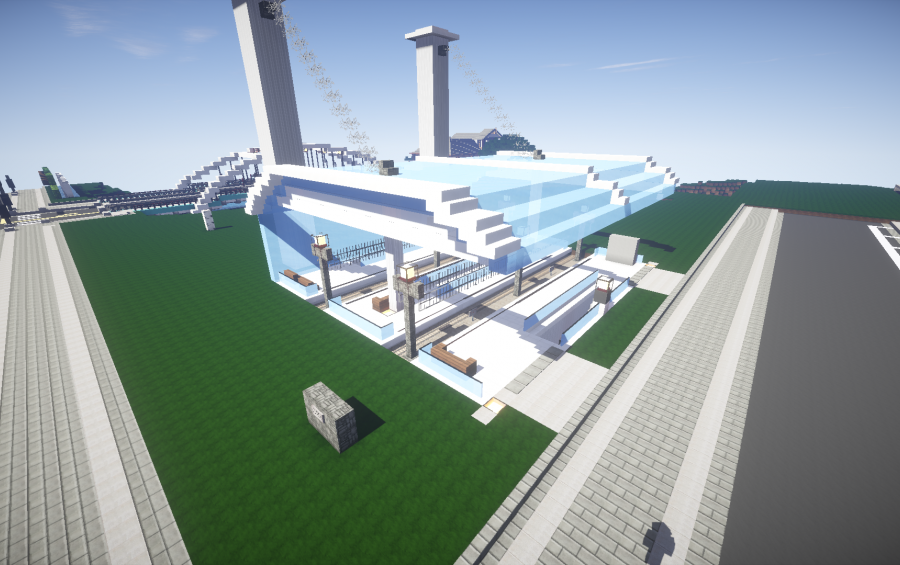
The team conducted research, gathered feedback, hosted community charettes and wrote a plan that detailed opportunities, challenges and potential costs to build the trail. The project received a boost in 2015 when students in the College of Architecture, Art and Planning’s Design Connect program agreed to develop a concept plan. “For decades, among those of us who were thinking about a future public trail, most folks were saying this could never happen,” said Bob Beck ’64, who chairs the task force. That was one of three major challenges facing planners of the proposed rail trail, whose tag line is “Connecting communities.” The town would also need easements from nearly 40 other landowners, and to build a bridge over Route 13 where it intersects near Route 366 (Dryden Road). Measuring 1,800 feet, the trail’s scenic new section running through the Reynolds Game Farm nearly completes a critical link to Cornell and Ithaca, but had long seemed unachievable.įor years, the New York State Department of Environmental Conservation (DEC) and sporting groups were hesitant to allow public access through the state’s last game farm, where pheasants are reared. The trail promises to connect three Cornell Botanic Gardens Natural Areas – Purvis Road Wetlands, Monkey Run and Upper Cascadilla – supporting “ Nature Rx” benefits to physical and mental health that have become more widely appreciated during the pandemic. “The completed rail trail will be a significant benefit to the broader community.”īeyond transportation alternatives – the basis for several grants – advocates expect the trail to encourage smart growth, improve access to affordable housing and attract new businesses and tourism. “Thanks to Dryden’s leadership, our students, staff and faculty can look forward to new, shared connections over miles of hiking, pedestrian and bicycle trails and networks,” Malina wrote. In a July letter of support sent to Jason Leifer, the Dryden town supervisor, Vice President for University Relations Joel Malina said it was impressive to see how the rail trail plan aligned with key goals and strategies within the Tompkins County Comprehensive Plan, the Town of Dryden and Town of Ithaca comprehensive plans, the county’s 2020 Energy Strategy and the university’s Climate Action Plan. “We see this as a way to be a better partner in terms of some of the employee commute options and improving the quality of life for faculty, staff and students.” “We’re really proud of this, and it does have a lot to do with the Cornell community,” said Dan Lamb, deputy supervisor for the Town of Dryden and a lecturer at the Cornell Institute for Public Affairs, part of the Cornell Jeb E.

And in addition to contributing $10,000, the university has agreed to easements on six parcels of land it owns, allowing public access to the trail. Faculty, staff and alumni have served on the volunteer task force, which has won $2.5 million in grants, and in local government roles. Students developed an influential concept plan.

“Providing alternatives to get to campus or to Ithaca from other areas without a car is among our strategies.”Ĭornellians have made a variety of important contributions to the initiative.

“Here the trail used to bring in coal to the university’s central heating plant, and now it will bring in people on e-bikes as we’re working to meet our climate-neutral goals,” said Todd Bittner, director of natural areas at Cornell Botanic Gardens and a member of Dryden’s Rail Trail Task Force. The town, with support from Cornell, expects the multiuse trail to eventually provide a 14.4-mile corridor enabling car-free passage to and from Ithaca and the nearby communities of Varna, Etna, Freeville and Dryden, advancing university and regional sustainability plans by reducing reliance on fossil fuels.

Newly restored and cleared of the overgrowth that claimed the former Lehigh Valley Railroad bed after a century of service ended in 1972, the bridges are now historic features in a short – but significant – new section of the Dryden Rail Trail. Just east of Ithaca in the Town of Dryden, a pair of wooden railroad trestles are remnants of an era when coal cars bound for Cornell’s heating plant rumbled regularly over a meandering Cascadilla Creek.


 0 kommentar(er)
0 kommentar(er)
